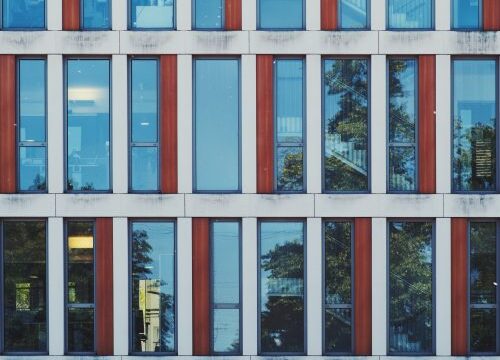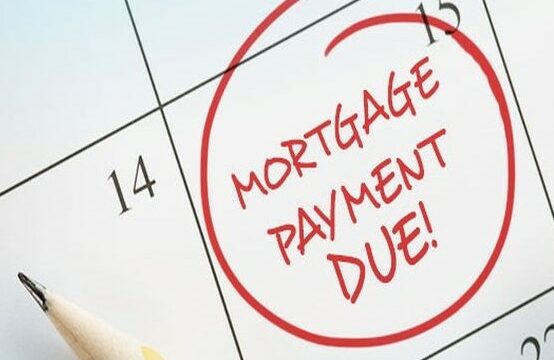Commercial propertyAn asset, normally to be held for the long-term and to produce an income, and / or Capital Growth. Examples include; Hospitality (hotels), Retail (shops), Leisure (pubs), Student Accommodation, Medical (GP Surgery), Light Industrial (Shed / Logistics), Heavy Industrial (Manufacturing Plant), HMO (House of Multiple Occupancy; e.g. Bedsit), Office, Care Home / Retirement and Educational (University / Private School). enjoyed a bumper year in 2017, with investors not put off by Brexit or political uncertainty and encouraged, rather than deterred, by the drop in sterling.
London’s safe haven status helped to keep transactions volumes high, with overseas investors continuing to plough plenty of money into officesUsed in Development Finance and for Commercial Mortgages, to describe any asset which is to be used as office space., warehousesUsed as a description of a property class in Commercial Property. Think of the huge storage Warehouses and logistic centres used by supermarkets and online retailers. Also known colloquially as a 'Shed'. and retailAs a Commercial Property type this refers to properties used as shops of any kind; e.g. grocery, clothes, opticians, etc. space.
As we analysed in a previous blog, low stamp duty, long leasesThe contract between Landlord and Tenant, that governs the terms of the latter occupying the former's property. It will include Rent due, payment terms, the deposit amount, the term of the tenancy, tenant and landlord responsibilities and break clauses amongst others., strong yieldsThe income that a property produces. It is calculated by taking the gross rental and dividing it by the property value and multiplied by 100. Gross rental of £ 60,000 against a property value of £ 1,000,000 would equate to a 6% yield. You can also calculate the Net Yield, which would deduct the property running costs and any mortgage costs, before completing the same calculation. and (for overseas investors) the weakness of the pound makes commercial propertyAn asset, normally to be held for the long-term and to produce an income, and / or Capital Growth. Examples include; Hospitality (hotels), Retail (shops), Leisure (pubs), Student Accommodation, Medical (GP Surgery), Light Industrial (Shed / Logistics), Heavy Industrial (Manufacturing Plant), HMO (House of Multiple Occupancy; e.g. Bedsit), Office, Care Home / Retirement and Educational (University / Private School). highly attractive, often more so than residential propertyA person's main residence, or in the case of Property Development the term used to classify the end product; i.e. I am developing a mixed site of Commercial Property and Residential Property..
Huge sums witnessed in 2017
In the first half of 2017 some £14 billion was invested in commercial propertyAn asset, normally to be held for the long-term and to produce an income, and / or Capital Growth. Examples include; Hospitality (hotels), Retail (shops), Leisure (pubs), Student Accommodation, Medical (GP Surgery), Light Industrial (Shed / Logistics), Heavy Industrial (Manufacturing Plant), HMO (House of Multiple Occupancy; e.g. Bedsit), Office, Care Home / Retirement and Educational (University / Private School). in London on its own. The West End, in particular, drew a huge amount of investment in commercial propertyAn asset, normally to be held for the long-term and to produce an income, and / or Capital Growth. Examples include; Hospitality (hotels), Retail (shops), Leisure (pubs), Student Accommodation, Medical (GP Surgery), Light Industrial (Shed / Logistics), Heavy Industrial (Manufacturing Plant), HMO (House of Multiple Occupancy; e.g. Bedsit), Office, Care Home / Retirement and Educational (University / Private School). last year – helped by being a prime spot for entertainment, retailAs a Commercial Property type this refers to properties used as shops of any kind; e.g. grocery, clothes, opticians, etc., office and start-up space. Some £2.1 billion was invested in just eight £100 million-plus deals alone, the highest volume the capitalThe value of a financial asset in monetary terms. See Capital Value. has ever seen.
Investment has been unaffected by Brexit, with Savills reporting that Asian investors spent more than £5.4 billion on commercial propertyAn asset, normally to be held for the long-term and to produce an income, and / or Capital Growth. Examples include; Hospitality (hotels), Retail (shops), Leisure (pubs), Student Accommodation, Medical (GP Surgery), Light Industrial (Shed / Logistics), Heavy Industrial (Manufacturing Plant), HMO (House of Multiple Occupancy; e.g. Bedsit), Office, Care Home / Retirement and Educational (University / Private School). in London between the end of June 2016 and the start of 2018. In the same time period European investors spent more than £3 billion on London commercial real estate, Middle Eastern investors pumped in more than £1.9 billion and US investors just over £1 billion, as the Brexit vote spurred rather than discouraged investment into the capitalThe value of a financial asset in monetary terms. See Capital Value..
A bounce back in investment
In Q3 2017 office investment volumes in the City rebounded, to stand at £2.3 billion. Overall, office investment volumes in London totalled around £3.4 billion in the same quarter. This heralded the fifth consecutive rise in London quarterly office take-up.
By the end of 2017, commercial propertyAn asset, normally to be held for the long-term and to produce an income, and / or Capital Growth. Examples include; Hospitality (hotels), Retail (shops), Leisure (pubs), Student Accommodation, Medical (GP Surgery), Light Industrial (Shed / Logistics), Heavy Industrial (Manufacturing Plant), HMO (House of Multiple Occupancy; e.g. Bedsit), Office, Care Home / Retirement and Educational (University / Private School). accounted for 13% of the value of all buildings in the UK, while total returns were approximately 5%. Some 29% of the UK’s commercial propertiesAn asset, normally to be held for the long-term and to produce an income, and / or Capital Growth. Examples include; Hospitality (hotels), Retail (shops), Leisure (pubs), Student Accommodation, Medical (GP Surgery), Light Industrial (Shed / Logistics), Heavy Industrial (Manufacturing Plant), HMO (House of Multiple Occupancy; e.g. Bedsit), Office, Care Home / Retirement and Educational (University / Private School). are now owned by overseas investors. When looking at the UK’s net wealth, commercial propertyAn asset, normally to be held for the long-term and to produce an income, and / or Capital Growth. Examples include; Hospitality (hotels), Retail (shops), Leisure (pubs), Student Accommodation, Medical (GP Surgery), Light Industrial (Shed / Logistics), Heavy Industrial (Manufacturing Plant), HMO (House of Multiple Occupancy; e.g. Bedsit), Office, Care Home / Retirement and Educational (University / Private School). accounted for around 10% of this figure by the end of last year.
Since the turn of the century, the value of the UK’s commercial propertyAn asset, normally to be held for the long-term and to produce an income, and / or Capital Growth. Examples include; Hospitality (hotels), Retail (shops), Leisure (pubs), Student Accommodation, Medical (GP Surgery), Light Industrial (Shed / Logistics), Heavy Industrial (Manufacturing Plant), HMO (House of Multiple Occupancy; e.g. Bedsit), Office, Care Home / Retirement and Educational (University / Private School). stock has increased by an average of 3% per year. Some 55% of commercial propertyAn asset, normally to be held for the long-term and to produce an income, and / or Capital Growth. Examples include; Hospitality (hotels), Retail (shops), Leisure (pubs), Student Accommodation, Medical (GP Surgery), Light Industrial (Shed / Logistics), Heavy Industrial (Manufacturing Plant), HMO (House of Multiple Occupancy; e.g. Bedsit), Office, Care Home / Retirement and Educational (University / Private School). is owned by investors, equivalent to £486 billion.
During 2017, London continued to be the dominant region with regards to commercial propertyAn asset, normally to be held for the long-term and to produce an income, and / or Capital Growth. Examples include; Hospitality (hotels), Retail (shops), Leisure (pubs), Student Accommodation, Medical (GP Surgery), Light Industrial (Shed / Logistics), Heavy Industrial (Manufacturing Plant), HMO (House of Multiple Occupancy; e.g. Bedsit), Office, Care Home / Retirement and Educational (University / Private School)., with 18.9% of the UK total. Only the South East – with 15.1% – came close. East London, which has become an increasingly popular hub for digital and tech companies and start-up space, witnessed £9.7 billion investment in commercial propertyAn asset, normally to be held for the long-term and to produce an income, and / or Capital Growth. Examples include; Hospitality (hotels), Retail (shops), Leisure (pubs), Student Accommodation, Medical (GP Surgery), Light Industrial (Shed / Logistics), Heavy Industrial (Manufacturing Plant), HMO (House of Multiple Occupancy; e.g. Bedsit), Office, Care Home / Retirement and Educational (University / Private School). throughout 2017, with 76% focused on office space.
What happened in 2016?
Before the Brexit vote the commercial propertyAn asset, normally to be held for the long-term and to produce an income, and / or Capital Growth. Examples include; Hospitality (hotels), Retail (shops), Leisure (pubs), Student Accommodation, Medical (GP Surgery), Light Industrial (Shed / Logistics), Heavy Industrial (Manufacturing Plant), HMO (House of Multiple Occupancy; e.g. Bedsit), Office, Care Home / Retirement and Educational (University / Private School). sector was going along quite nicely, but the shock result of the EU referendum did cause uncertainty and indecision in the immediate aftermath. In the days after valuations dropped, deals were put on hold and commercial propertyAn asset, normally to be held for the long-term and to produce an income, and / or Capital Growth. Examples include; Hospitality (hotels), Retail (shops), Leisure (pubs), Student Accommodation, Medical (GP Surgery), Light Industrial (Shed / Logistics), Heavy Industrial (Manufacturing Plant), HMO (House of Multiple Occupancy; e.g. Bedsit), Office, Care Home / Retirement and Educational (University / Private School). funds were forced to man the gates to stop investors leaving in their masses, but nerves soon settled, property funds reopened for business and valuations soared upwards again as people tried to take a business as usual approach to the new post-Brexit environment.
In a world of global uncertainty, low bond yieldsThe income that a property produces. It is calculated by taking the gross rental and dividing it by the property value and multiplied by 100. Gross rental of £ 60,000 against a property value of £ 1,000,000 would equate to a 6% yield. You can also calculate the Net Yield, which would deduct the property running costs and any mortgage costs, before completing the same calculation., oil price volatility and shock election results, investors were looking for certainty and stability – and London’s safe haven status helped to keep the UK commercial propertyAn asset, normally to be held for the long-term and to produce an income, and / or Capital Growth. Examples include; Hospitality (hotels), Retail (shops), Leisure (pubs), Student Accommodation, Medical (GP Surgery), Light Industrial (Shed / Logistics), Heavy Industrial (Manufacturing Plant), HMO (House of Multiple Occupancy; e.g. Bedsit), Office, Care Home / Retirement and Educational (University / Private School). sector competitive. Long-let City officesUsed in Development Finance and for Commercial Mortgages, to describe any asset which is to be used as office space., retailAs a Commercial Property type this refers to properties used as shops of any kind; e.g. grocery, clothes, opticians, etc. space and warehousesUsed as a description of a property class in Commercial Property. Think of the huge storage Warehouses and logistic centres used by supermarkets and online retailers. Also known colloquially as a 'Shed'. (driven by an increased demand for online shopping) all offered investors the chance for a secure income.
The outcome of the EU referendum also had the unintended effect of making the UK more attractive to overseas investors. While the drastic fall in sterling was a concern for many, it made the UK particularly attractive to foreign investors, who could use the weak pound to their advantage while also benefitting from long leasesThe contract between Landlord and Tenant, that governs the terms of the latter occupying the former's property. It will include Rent due, payment terms, the deposit amount, the term of the tenancy, tenant and landlord responsibilities and break clauses amongst others. and strong rental returns.
Continued growth in the future
The UK’s commercial propertyAn asset, normally to be held for the long-term and to produce an income, and / or Capital Growth. Examples include; Hospitality (hotels), Retail (shops), Leisure (pubs), Student Accommodation, Medical (GP Surgery), Light Industrial (Shed / Logistics), Heavy Industrial (Manufacturing Plant), HMO (House of Multiple Occupancy; e.g. Bedsit), Office, Care Home / Retirement and Educational (University / Private School). investment sector – which is the largest in Europe – is expected to have grown by 1.9% by the end of 2018. It is anticipated to rise again by 2% in 2019 and 1.8% in both 2020 and 2021.
According to RICS’ UK Commercial PropertyAn asset, normally to be held for the long-term and to produce an income, and / or Capital Growth. Examples include; Hospitality (hotels), Retail (shops), Leisure (pubs), Student Accommodation, Medical (GP Surgery), Light Industrial (Shed / Logistics), Heavy Industrial (Manufacturing Plant), HMO (House of Multiple Occupancy; e.g. Bedsit), Office, Care Home / Retirement and Educational (University / Private School). Market Survey for Q1 2018, there is a growing disparity between the strength of the industrial sector and the struggles of retailAs a Commercial Property type this refers to properties used as shops of any kind; e.g. grocery, clothes, opticians, etc. (as evidenced by the troubles major firms such as Next, Debenhams, New Look, Marks & Spencer and House of Fraser have been experiencing of late). Demand for industrial space is still solid and tenantA person that occupies a property owned by somebody else, and pays rent for that privilege. enquiries for office space were up for the first time since the first quarter of 2016.
RICS’ research also found that the outlook for prime office rents is comfortably positive (net balance +38%), while both prime and secondary industrial markets continue to display stronger rental projections than all other sectors for 2018 as a whole.
In short, then, while 2018 might not be quite as bumper a year as 2017, the strong performance of office and industrial space should be enough to offset issues within the retailAs a Commercial Property type this refers to properties used as shops of any kind; e.g. grocery, clothes, opticians, etc. sector. And, with sterling still in decline, the UK’s commercial propertyAn asset, normally to be held for the long-term and to produce an income, and / or Capital Growth. Examples include; Hospitality (hotels), Retail (shops), Leisure (pubs), Student Accommodation, Medical (GP Surgery), Light Industrial (Shed / Logistics), Heavy Industrial (Manufacturing Plant), HMO (House of Multiple Occupancy; e.g. Bedsit), Office, Care Home / Retirement and Educational (University / Private School). sector will continue to remain attractive to domestic and international investors alike.



